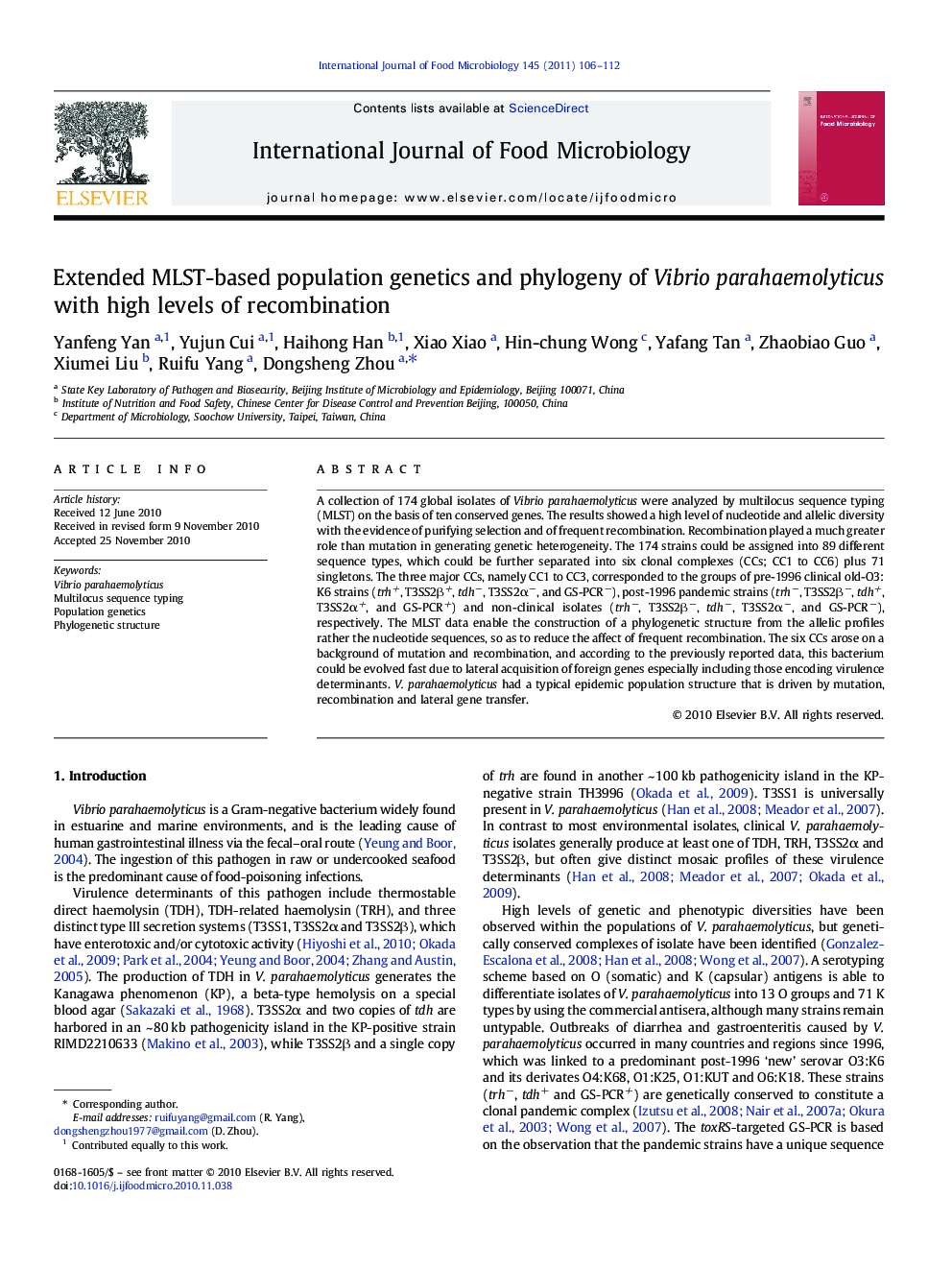| کد مقاله | کد نشریه | سال انتشار | مقاله انگلیسی | نسخه تمام متن |
|---|---|---|---|---|
| 4368731 | 1616674 | 2011 | 7 صفحه PDF | دانلود رایگان |

A collection of 174 global isolates of Vibrio parahaemolyticus were analyzed by multilocus sequence typing (MLST) on the basis of ten conserved genes. The results showed a high level of nucleotide and allelic diversity with the evidence of purifying selection and of frequent recombination. Recombination played a much greater role than mutation in generating genetic heterogeneity. The 174 strains could be assigned into 89 different sequence types, which could be further separated into six clonal complexes (CCs; CC1 to CC6) plus 71 singletons. The three major CCs, namely CC1 to CC3, corresponded to the groups of pre-1996 clinical old-O3:K6 strains (trh+, T3SS2β+, tdh−, T3SS2α−, and GS-PCR−), post-1996 pandemic strains (trh−, T3SS2β−, tdh+, T3SS2α+, and GS-PCR+) and non-clinical isolates (trh−, T3SS2β−, tdh−, T3SS2α−, and GS-PCR−), respectively. The MLST data enable the construction of a phylogenetic structure from the allelic profiles rather the nucleotide sequences, so as to reduce the affect of frequent recombination. The six CCs arose on a background of mutation and recombination, and according to the previously reported data, this bacterium could be evolved fast due to lateral acquisition of foreign genes especially including those encoding virulence determinants. V. parahaemolyticus had a typical epidemic population structure that is driven by mutation, recombination and lateral gene transfer.
Research Highlights
► A novel multilocus sequence typing scheme was employed to analyze 174 global isolates of Vibrio parahaemolyticus.
► Recombination played a much greater role than mutation, which promoted the generation of a high level of nucleotide and allelic diversity under purifying selection.
► A phylogenetic structure was constructed from the allelic profiles rather the nucleotide sequences to reduce the affect of frequent recombination.
► V. parahaemolyticus had a typical epidemic population structure that is driven by mutation, recombination and lateral gene transfer.
Journal: International Journal of Food Microbiology - Volume 145, Issue 1, 31 January 2011, Pages 106–112